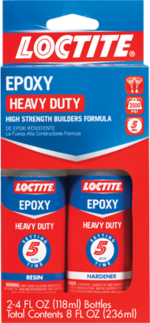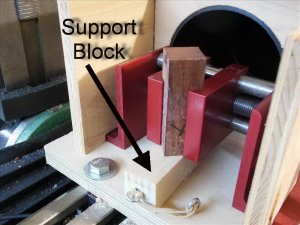jttheclockman
Member
Something that comes up so often and is talked about on a regular basis, and that is blanks going BOOM. Blowups. There are a few examples just recently here and people are talking about them. It probably happens way too often in the segmenting world. Just about all of us has had this happen and boy it is devistating when you have so many hours in a blank and it just blows up for one reason or other.
So what i propose we do is use this thread to list as many possible causes and if you have a remedy that has helped you over time, place that here as well.
What I am trying to do is have a reference point or thread that maybe helpful to avoid such pitfalls. Maybe it can be placed in the library or as a sticky pin in one of the forums.
What got me think about this is the topic came up when a member started doing segmenting work and he had the misfortune of being introduced to the dreaded "Blow Up" I mentioned to him though that no one person can tell you exactly why this happened. We were not there and watched every step of the way. As you will read there will be many many reasons why this occurs but hopefully the silver lining is we can learn what to look for and aids to help and maybe some of this can be helpful to others in the future. I feel segmenting is the future or blank making in general. The possibilities are endless.
I will start by listing a few of the obvious ones first and hopefully others we jump in and make this a meaningful post.
***Heat---Probably the number one enemy. It is imperative to control the amount of heat generated when drilling blanks and when turning. Heat will soften glue joints, melt plastics and all around play havoc with any kind of blank weather segmented or not. My remedies I use is to slow things down. slow the speed of the drill, slow the whole process, sharp tools and bits and I like to use DNA ( denatured alcohol) to cool my bits.
***Tools---Can not be stressed any more but sharp tools are a must. Never can a tool be too sharp. Know how to use the tool. Know how to present the tool to the workpice and keep it in that sweet cutting zone throughout the cut. use the proper tool for the job. Not all tools are made for each blank. Probably the most versatile tool is the skew. It is a tool I think everyone should learn to use. You read so many people are switching to carbide cutting tools but to me a skew will outshine any of them if properly used. Not that carbide tools do not have their place. yes they do.
***GluesThis gets subjective at times because we all have our favorites. To me when gluing wood to wood, I will always use Titebond II carpenters glue. When gluing metals to wood or acrylics I chose to use System 3 T88 epoxy. I will use CA on occassion to glue acrylics to acrylics. A couple key factors here in the glue area. Make sure the glue is not old. There is a shelf life to glues.It will lose its properties when gets old. Store glue in a cool dry place.
Make sure when using any glues that you let the glue cure and not just dry.
Also make sure your glue has enough open time or workable time before it starts to set up while you scramble to get your project assembled. Plan and layout your glueups and dry fit things. make sure you have enough clamps and a good way of clamping to insure success.
OK that is it for me for now. Lets have some more of your causes and cures for the dreaded blank "Booms" We all have had them but hopefully the one thing we learn is that we learn. Hopefully this thread can be used as intended.
Thanks for your input.
So what i propose we do is use this thread to list as many possible causes and if you have a remedy that has helped you over time, place that here as well.
What I am trying to do is have a reference point or thread that maybe helpful to avoid such pitfalls. Maybe it can be placed in the library or as a sticky pin in one of the forums.
What got me think about this is the topic came up when a member started doing segmenting work and he had the misfortune of being introduced to the dreaded "Blow Up" I mentioned to him though that no one person can tell you exactly why this happened. We were not there and watched every step of the way. As you will read there will be many many reasons why this occurs but hopefully the silver lining is we can learn what to look for and aids to help and maybe some of this can be helpful to others in the future. I feel segmenting is the future or blank making in general. The possibilities are endless.
I will start by listing a few of the obvious ones first and hopefully others we jump in and make this a meaningful post.
***Heat---Probably the number one enemy. It is imperative to control the amount of heat generated when drilling blanks and when turning. Heat will soften glue joints, melt plastics and all around play havoc with any kind of blank weather segmented or not. My remedies I use is to slow things down. slow the speed of the drill, slow the whole process, sharp tools and bits and I like to use DNA ( denatured alcohol) to cool my bits.
***Tools---Can not be stressed any more but sharp tools are a must. Never can a tool be too sharp. Know how to use the tool. Know how to present the tool to the workpice and keep it in that sweet cutting zone throughout the cut. use the proper tool for the job. Not all tools are made for each blank. Probably the most versatile tool is the skew. It is a tool I think everyone should learn to use. You read so many people are switching to carbide cutting tools but to me a skew will outshine any of them if properly used. Not that carbide tools do not have their place. yes they do.
***GluesThis gets subjective at times because we all have our favorites. To me when gluing wood to wood, I will always use Titebond II carpenters glue. When gluing metals to wood or acrylics I chose to use System 3 T88 epoxy. I will use CA on occassion to glue acrylics to acrylics. A couple key factors here in the glue area. Make sure the glue is not old. There is a shelf life to glues.It will lose its properties when gets old. Store glue in a cool dry place.
Make sure when using any glues that you let the glue cure and not just dry.
Also make sure your glue has enough open time or workable time before it starts to set up while you scramble to get your project assembled. Plan and layout your glueups and dry fit things. make sure you have enough clamps and a good way of clamping to insure success.
OK that is it for me for now. Lets have some more of your causes and cures for the dreaded blank "Booms" We all have had them but hopefully the one thing we learn is that we learn. Hopefully this thread can be used as intended.
Thanks for your input.
Last edited:


